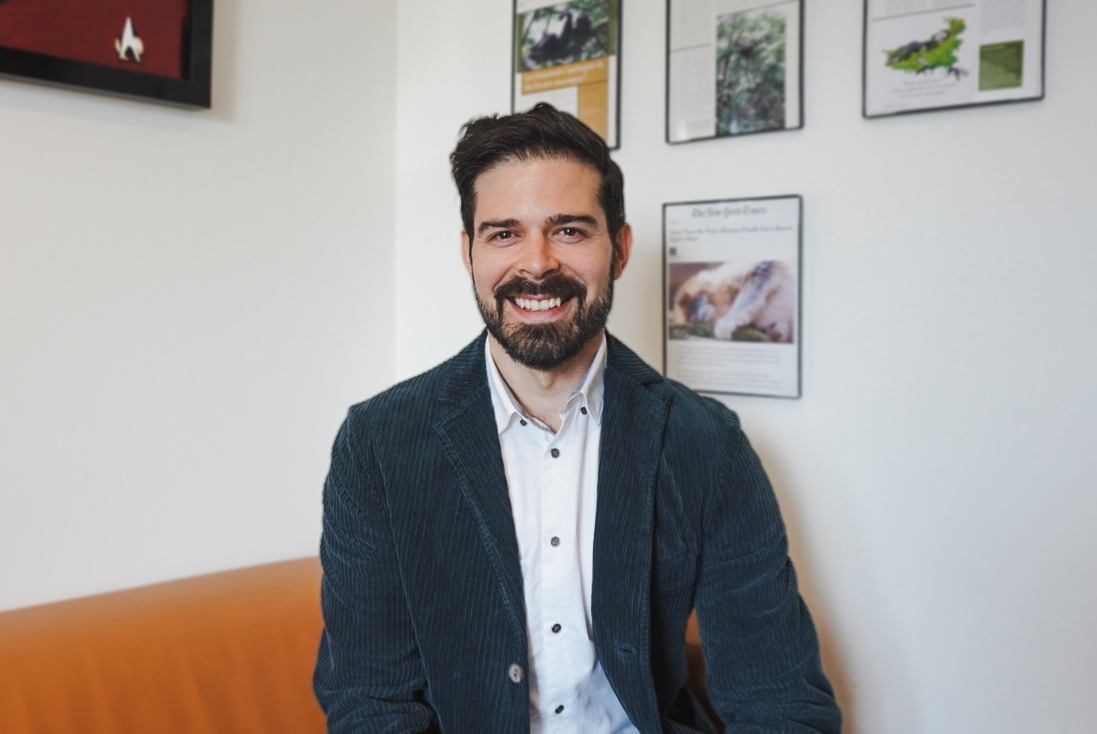Having trouble sleeping?
Professor David Samson’s sleep expertise is here to save the day, or rather, night.
Lack of sleep weakens students’ ability to remember, limits their attention spans, and slows down processing speed. Better sleep means better cognitive function. Better cognitive function means better grades.
In terms of physical health, continuous sleep deprivation raises the risk for several chronic health problems, including obesity, diabetes, and cardiovascular disease.
One easy way to sleep better for your mind and body is to get blackout curtains. Blackout curtains provide enough darkness to signal to the brain’s pineal gland that it’s nighttime.
The pineal gland detects sleep and wake up times based on the level of blue light in the environment. “Blue light inhibits melatonin,” says David Samson, a professor of Anthropology at the University of Toronto Mississauga (UTM) and Director of the Sleep and Human Evolution Lab. Your body’s internal clock, when aligned with the day-night cycle, directs timings (circadian rhythms) for biological processes, like hormonal activity, to healthily take place. Melatonin is a hormone that “regulates sleep wavelength timing.”
In addition to improving your sleep environment, routines psychologically prepare the body for sleep. Switching off the lights, brushing your teeth before bed, and turning electronic devices off at least one hour before going to bed improves sleep hygiene.
To maintain sleep hygiene, avoid eating at least three hours before bed. “Our metabolisms work according to our circadian rhythms,” says Dr. Samson. “Eating [before bed] can have an exponential effect.” Why?
“Our circadian rhythms work as sinusoidal curves, or waves; there is no baseline. So, they have peaks and troughs,” explains Dr. Samson. If we eat when our metabolism is at a trough, or its lowest point, we shorten the wavelength of our metabolic cycle, trigger the cycle to start back up much earlier, and cause our bodies to metabolize food into energy—all of which prevents sleep.
Through ANT402: Wild Nights, a course that Dr. Samson has developed and will be teaching this fall at UTM, Dr. Samson offers students a bio-hack to improve mental and physical performance: the Oura Ring.
“The Oura Ring measures REM sleep, non-REM sleep, and blood oxygen levels,” says Dr. Samson. “They’re like super Fitbits called actigraphs.” Actigraphs record and monitor sleep activities.
Dr. Samson’s course “lets students be citizen scientists” in the way that it asks them to self-track their sleep quality and circadian rhythms.
Students are put into a pair-wise study design, meaning half the class is the control group while the other half tests their circadian rhythm interventions. Then, the students switch half-way through the course. “This is a behavioural intervention to see if there’s an effect on sleep physiology,” explains Dr. Samson. “The rings are correlated and validated with a 75 to 80 per cent accuracy to REM staging in a lab.”
Students decide what changes, such as intermittent fasting, they want to introduce into their lives to generate sleep data. Some have gone on to publish their final papers.
“Students have to give the ring back though,” Dr. Samson chuckles. It’s a US$300 piece of equipment.

